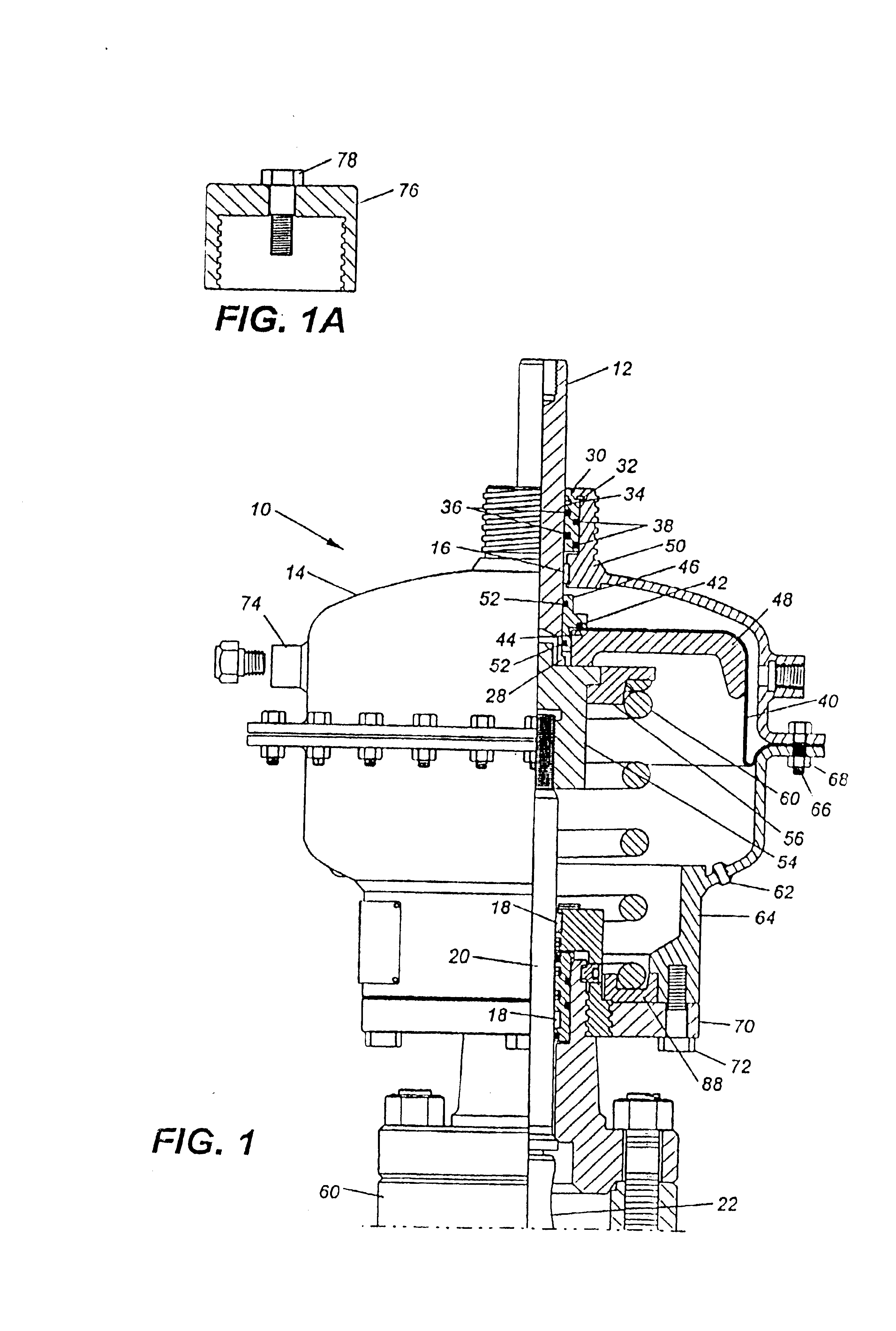Valve actuator apparatus
a valve actuator and actuator technology, applied in the direction of valve details, valve arrangement, spindle sealing, etc., can solve the problems of difficult to determine whether the drift adjustment has been made correctly, damage to the top shaft seal or bearing, and substantial inconvenience, so as to achieve convenient service, simple yet reliable construction, and economic construction
- Summary
- Abstract
- Description
- Claims
- Application Information
AI Technical Summary
Benefits of technology
Problems solved by technology
Method used
Image
Examples
Embodiment Construction
Referring now to the drawings, and more particularly to FIG. 1, a diaphragm-type valve actuator 10 is shown in accord with the present invention. Top shaft 12, which is preferably formed from stainless steel, effectively floats with respect to top diaphragm case 14. As a general matter, all non-stainless metallic components in actuator 10 are preferably coated for protection against environmental conditions. Wear bearing 16, as well as wear bearings 18 (shown in detail in FIG. 2), are preferably non-metallic to eliminate close tolerance problems normally associated with the actuator top shaft and bonnet stem. The wear bearings effectively suspend top shaft 12 and bonnet stem 20 to thereby prevent metallic contact during operation. Thus, the wear bearings are preferably non-metallic and made from relatively hard plastic-like materials, such as Molygard, Nylatron, or Delrin. The wear bearings and other plastic-like components discussed hereinafter may also be made from various plastic...
PUM
 Login to View More
Login to View More Abstract
Description
Claims
Application Information
 Login to View More
Login to View More - R&D
- Intellectual Property
- Life Sciences
- Materials
- Tech Scout
- Unparalleled Data Quality
- Higher Quality Content
- 60% Fewer Hallucinations
Browse by: Latest US Patents, China's latest patents, Technical Efficacy Thesaurus, Application Domain, Technology Topic, Popular Technical Reports.
© 2025 PatSnap. All rights reserved.Legal|Privacy policy|Modern Slavery Act Transparency Statement|Sitemap|About US| Contact US: help@patsnap.com



